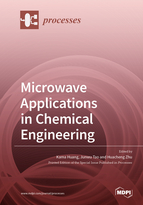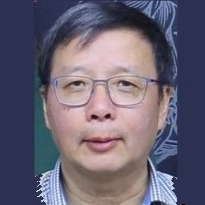Microwave Applications in Chemical Engineering
A special issue of Processes (ISSN 2227-9717). This special issue belongs to the section "Chemical Processes and Systems".
Deadline for manuscript submissions: closed (31 January 2019) | Viewed by 41532
Special Issue Editors
Interests: fundamental microwave theory; novel microwave applications
Special Issues, Collections and Topics in MDPI journals
Interests: microwave device design; microwave power application; computational electromagnetic and multi-physics
Special Issues, Collections and Topics in MDPI journals
Special Issue Information
Dear Colleagues,
Microwaves are electromagnetic waves with frequencies ranging from 0.3 to 300 GHz, that could heat targets via dielectric loss other than heat convection as in the conventional heating process, enabling fast heating and selective heating, thus providing the potential to save time and energy greatly. With the demand for green chemistry in both academia and industry, microwave heating is emerging as a promising heat source for rapid chemical reactions and materials synthesis in minutes, instead of hours or even days usually required by conventional heating method.
Application of microwave in various areas of chemical engineering has been investigated since 1980s, and there have been cases of successful microwave industrial applications. However, microwave heating suffers from hot spots and thermal run away, and the interaction between microwave and materials is unclear, hindering its safe and efficient applications. Hence, some fundamental theories regarding microwave heating are urgently to be figured out to expedite the practical application of microwave in chemical engineering industries. Besides, novel application of microwave in chemical engineering is also yet to be explored.
This Special Issue on “Microwave Applications in Chemical Engineering” aims at showing the most recent advances in dielectric properties measurement, microwave material interaction, industrial applications of microwave energy, modelling of microwave power applications, microwave plasma applications, microwave chemistry, microwave assisted biomass and waste processing, medical and biological applications of microwave, microwave processing design and optimization, and microwave assisted preparation of new materials.
Prof. Dr. Kama Huang
Prof. Dr. Junwu Tao
Dr. Huacheng Zhu
Guest Editors
Manuscript Submission Information
Manuscripts should be submitted online at www.mdpi.com by registering and logging in to this website. Once you are registered, click here to go to the submission form. Manuscripts can be submitted until the deadline. All submissions that pass pre-check are peer-reviewed. Accepted papers will be published continuously in the journal (as soon as accepted) and will be listed together on the special issue website. Research articles, review articles as well as short communications are invited. For planned papers, a title and short abstract (about 100 words) can be sent to the Editorial Office for announcement on this website.
Submitted manuscripts should not have been published previously, nor be under consideration for publication elsewhere (except conference proceedings papers). All manuscripts are thoroughly refereed through a single-blind peer-review process. A guide for authors and other relevant information for submission of manuscripts is available on the Instructions for Authors page. Processes is an international peer-reviewed open access monthly journal published by MDPI.
Please visit the Instructions for Authors page before submitting a manuscript. The Article Processing Charge (APC) for publication in this open access journal is 2400 CHF (Swiss Francs). Submitted papers should be well formatted and use good English. Authors may use MDPI's English editing service prior to publication or during author revisions.
Keywords
- dielectric properties measurement
- microwave processing of materials
- microwave driven plasma
- microwave processing of chemical reactions
- waste processing
- device design and optimization








